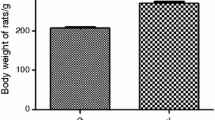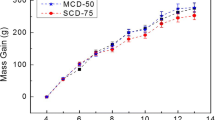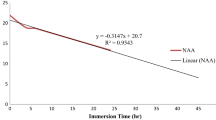Abstract
This article deals with an osteoporosis model using New Zealand rabbits in order to study the function of inorganic elements for women patients with osteoporosis. Thirty cases of iliac crests were collected and determined using the neutron activation analysis technique. The results show that the fluorine concentrations in the experimental group are higher than those in the control group and that the magnesium concentrations are significantly lower (p<0.001), but the concentrations of potassium, sodium, calcium, barium, manganese, and strontium show no significant differences. Combined with the serum biochemical markers of bone formation and resorption, the physiological functions of some metal elements in bone are also discussed.
Similar content being viewed by others
References
J.H. Beattie and A. Avenell, Trace element nutrition and bone metabolism, Nutr. Res. Rev. 5, 168–188 (1992).
L.V. Avioli, Significance of osteoporosis: a growing international health problem, Calcif. Tissue Int. 49, 55–57 (1991).
C. Cooper and G.M. Campion, Hip fractures in the elderly: a worldwide projection, Osteoporosis Int. 2, 285–289 (1992).
Y.D. Cheng, G.S. Zhuang, Y.S. Wang, et al., Preliminary study of correlation of Se content in human hair and tissues, J. Trace Elements Exp. Med. 1, 9–21 (1988).
Z.X. Wang, J. Xia, and Q.M. Yang, Investigation of serum phosphatase’s activities in New Zealand rabbits, Shanghai Exp. Anim. Sci. 16(2), 79–81 (1996) (in Chinese).
P.D. Saltman and L.G. Strause, The role of trace minerals in osteoporosis, J. Am. Coll. Nutr. 12, 384–389 (1993).
U. Tapper, H. Vuorinen, and H.M. Rauhamaa, Elemental analysis of long bones of infants from ficana excavations, Nucl. Instrum. Methods B49, 245–249 (1990).
M. Yamaguchi and H. Miwa, Stimulatory effect of beta-alanyl-l-histidinato zinc on bone formation in tissue culture, Pharmacology 42, 230–240 (1991).
I.E. Dreosti, Magnesium status and health, Nutr. Rev. 53(9), 23–27 (1995).
J.E. Sojka, Magnesium supplementation and osteoporosis, Nutr. Rev. 53(3), 71–80 (1995).
F. Bronner, Disorder of Mineral Metabolism, Vol. 1, Trace Minerals, Academic, New York (1981).
P. Bratter, Trace Element Analytical Chemistry in Medicine and Biology, Academic, New York, Vol. 2 (1983).
K.S. Leung, K.P. Fung, A.H. Sher, et al., Plasma bone specific alkaline phosphatase as an indicator of osteoblastic activity. J. Bone Joint Surg. 75B, 228–232 (1993).
Author information
Authors and Affiliations
Rights and permissions
About this article
Cite this article
Zhang, Y., Li, D., Zhuang, G. et al. Investigation of the elemental distribution in iliac crests of female New Zealand rabbits using NAA. Biol Trace Elem Res 86, 65–72 (2002). https://doi.org/10.1385/BTER:86:1:65
Received:
Revised:
Accepted:
Issue Date:
DOI: https://doi.org/10.1385/BTER:86:1:65




